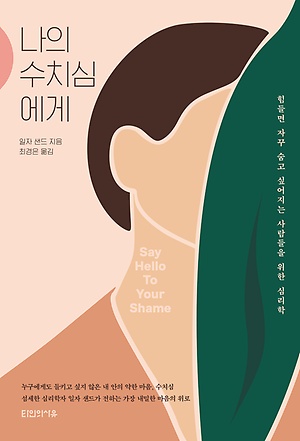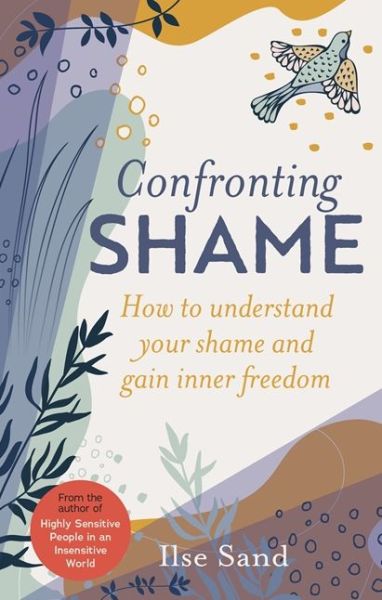How to Understand Your Shame and Gain Inner Freedom
The book is released in English, Dutch, Danish, Taiwanese, Russian, Turkish, simplified Chinese, German, Latvian, Japanese and Korean.
During 2024 and 2025 it will also be available in Slovakian.
 The Korean edition
The Korean edition

Publisher: DAEWON C.I. INC.
September 2021
Buy the book
 The Japanese edition
The Japanese edition

Publisher: SEIBUNDO SHINKO-SHA PUBLISHING
Title: 「恥をかくのが怖い」から解放される本: 自己肯定感を高めて、自分らしく生きるレッスン
April 2024
Order the book
 The Danish edition
The Danish edition

Publisher: Gyldendal
Original Danish title: Sig hej til din skam:
En bog om at slippe frygten for at være forkert
(Say Hello to your Shame. A book on letting go of the feeling that something is wrong with you)
January 2021
Buy the book
 The Taiwanese edition
The Taiwanese edition

Publisher: Acme Publishing Co., LTD.
February 2022
Buy the book
 The Russian edition
The Russian edition

Publisher: Alpina Publisher
October 2021
Buy the book
 The English edition
The English edition

Title: Confronting Shame: How to Understand Your Shame and Gain Inner Freedom
Publisher: Jessica Kingsley Publishers.
April 2022
Buy the book
 The Dutch edition
The Dutch edition

Publisher: Panta Rhei Publishers
Title: Hallo schaamte
Over het loslaten van de angst dat er iets mis met je is
Spring 2022
Buy the book
The Chinese edition

Publisher: Beijing Sunnbook Culture & Art Co.Ltd
Spring 2022
The German edition

November 2023
Junfermann Verlag GmbH
Title: Im Erdboden versinken?: Den Teufelskreis aus Scham und Angst durchbrechen
Order here
 The Latvian edition
The Latvian edition

Publisher: Zvaigzne ABC
Order here.
Turkish edition

Publisher: Sola Unitas Academy
2024
Order the book
The following editions are on the way but have not yet been release
The Slovak edition
Publisher: Citadella Publishing.
More information will follow.
 The Vietnamese edition
The Vietnamese edition
Publisher: Nha nam publishing and communications jsc
More information will follow.
About the book
Shame might be far from the first thing that comes to mind when you think about what’s causing all your problems. Often shame is hidden, and it’s seldom something we talk about. On the contrary,
often it’s buried beneath other problems, such as exaggerated self-repression, low self-esteem,exhaustion in social situations, and problems with close relationships. It can also be a hidden reasonfor abuse or anger.
While writing this book, I took every opportunity to ask people this question: “You don’t have to tell me what it is, but is there something you’re ashamed of?” Many of them nodded and looked away and said, “I’m not going to talk about it, though.” Others were a bit unsure about the question at first, and to help them I asked, “Is there something about your body you’d rather not show anyone? Or some characteristic you try to hide, or maybe something happened to you that you don’t want to share with anyone? A weakness you hope nobody will discover?”
After hearing these questions, more people nodded. Occasionally someone would snap back, “I’m not ashamed of anything!” or “I have nothing whatsoever to be ashamed about!” What I believe they were saying is: “You’re not going to get me to feel ashamed.” But sometimes they do feel
ashamed without even knowing it. One thing is our rational idea of what’s okay to be ashamed about, but it’s something else altogether when our bodies spontaneously react in shame – for example, when our eyes begin darting around, or when we stare down at our shoes.
As a pastor and psychotherapist, I’ve listened to people confide things they are ashamed of, and I’ve been struck by how intense and heartbreaking the pain and loneliness can be. But as soon as the shame is shared, a transformation takes place that can feel surprising, even miraculous. The person begins breathing deeper, their face and body relax, and they no longer look tense and tormented.
The relief in sharing our emotions can be so liberating that you have to wonder why it takes so long for most of us to work up the courage to talk about our sense that something is wrong with us – if we ever manage to do so.
Say Hello to Your Shame describes in clear, straightforward language how shame arises; how some people feel much more shame than they have any reason to; how you can find out if shame lies behind some of your problems; and how you can work on your shame and gain greater inner
freedom. This book has relevance for anyone interested in psychology or personal development. It will be particularly helpful for anyone prone to feel there’s something wrong with them.
In its deepest sense, shame is a reaction to insecurity with your self-perception. Some people have only a single corner of themselves they feel ashamed about. Others are deeply inhibited by feelings of shame. Regardless of the degree and extent of your shame, you can benefit from using the tools described in this book to free yourself from parts of your shame’s burden.
There is also a positive side to shame. For example, we try to suppress our greed around other people, because otherwise we would be ashamed of ourselves. For the most part, though, Say Hello to Your Shame deals with the negative consequences of shame and how you can free yourself of
them.
The particularly nasty thing about shame is that often we’re ashamed of shame itself, and therefore we don’t seek help. Too often I’ve seen people hide themselves in their loneliness instead of stepping out and leading an open, loving, vulnerable life.
Shame ruins lives. It leads you to crouch behind a shield where you try to hide from yourself as well as others. The shield holds out light and prevents you from seeing things clearly. It’s like a dirty window that distorts communication between you and people on the outside.
Fortunately there is a way out. Simply reading about others who are brave enough to acknowledge something they are ashamed of can be inspiring, and their courage can rub off on you. That’s why I’ve included the accounts of many people who have found their way out of shame and selfrepression.
There are also several tools in the book you can use initially to help crack open your shield and let the light shine through. This light will burn off the fog of shame preventing you from acknowledging yourself. When you see things more clearly, you realize you don’t have to obey your
shame.
You are not the problem, you’re not what’s wrong, even when you feel you are. When you feel something is wrong with you, it’s because something bad has happened. It’s not you that’s all wrong.
At the end of the book there is a test to measure how much of a burden shame is on you. You can start by taking the test, or wait until you’ve finished reading. Or don’t take it if you don’t want to.
Shame shouts: “You’re no good. Hang it up. Bury yourself. Hide.” I hope this book gives you the courage to confront your shame, so you can step out into the world, spread your wings, and acknowledge and stick up for yourself.
